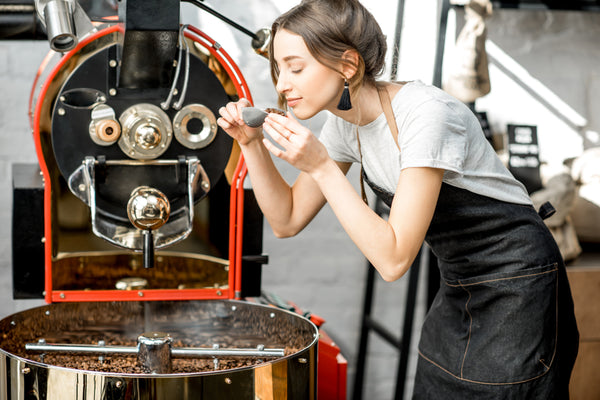What is Single Origin Coffee?
When we import our green, pre-roasted (before roasting) coffee beans, they come in sacks. Each quantity of sacks contains beans from a single country or origin. This makes them a single origin coffee. That's all that it takes - for all of the beans to come from one place.Often, the term 'single origin coffee' can be used to imply that it is something special - perhaps even a hallmark of quality. Which is wrong. However, it does mean that, once brewed, you will taste the individual characteristics of that region - much like wine. Imagine a wine made with grapes from multiple origins: the different flavours would interact and change the overall taste.
This isn't necessarily a bad thing. Sometimes we may want to build a specific flavour profile by combining beans with different origins. That is blended coffee.
What is Blended Coffee?
Most of the coffee you find in the world today will be a blended coffee. By mixing beans from different origins, unique flavour profiles can be created. Most roasters mix the green beans and then roast them together to even out the taste - allowing them to produce a consistent flavour from batch to batch.But, there's a problem
Single origin coffee has an inconsistent flavour from season to season. They are dependent upon the climate, the decisions of growers, delivery times, etc. This also isn't necessarily a bad thing. In fact, it can actually be considered a positive when trying out great single origin coffees: the variety of flavours and the discoveries to be made keep things exciting.
The problem is when you're a big coffee brand that wants to keep costs down and maintain that unique flavour your loyal customers keep coming back for. You will have to choose sub-par beans and blend them. You will also over-roast (burn) them to produce a more consistent flavour by blunting each bean's individual characteristics. You basically make them all taste the same.
Not only is this a problem in terms of flavour - people think that coffee SHOULD taste bitter, brown, and burnt - but it also makes traceability more difficult. How can we tell if the farmer is being incentivised to produce the best coffee possible, or is being squeezed to produce as much coffee as possible for as little as possible? We can't.
But, there's an up-side
Blends can be great! Especially for espresso. With espresso's harsh brewing method (find out more here - FILTER VS. ESPRESSO) the flavour profile of a single origin coffee can become unbalanced. It's very difficult to carry all the flavours through in the way you would like. However, we can craft a blend of beans that will bring through the flavours that we want in our espresso. If we want it a little brighter, more acidic, and to include the nutty and chocolatey flavours (instead of just a single muddled flavour), we can add some beans with those flavour notes.At Recent Beans, we go a step further. We craft our blends with post-roast beans, rather than blending the green beans and then roasting them. To unlock the best flavours from our beans, we roast each single origin coffee to its own profile and mix these finely dialled-in flavours after the roast.
Pre-roast (before roasting) blending can lead to under or over development in one or more of the single origins, as they develop differently during the roasting process.
Brewed Coffee
In the way blends are better for espresso, single origin coffees are better for brewing (like a filter coffee, V60, French press, etc). To 'taste the region', brewed coffee really opens up the beans' flavours. Just remember that your favourite Arokara, Papa New Guinea single origin coffee may have a slightly different flavour profile next season. It could be even better, or perhaps another origin has just been waiting for the right conditions to really outshine the rest. That's part of the joy of single origin coffee.Other terms you may have heard
When reading coffee labels, you may come across a couple of other terms.- Single Estate: The coffee will originate from a single farm / growth area. Again, this doesn't guarantee quality, but has excellent traceability.
- Micro-lot: Some of the rarest coffees in the world are grown on small lots and are labelled 'micro-lot'. When you're rearing a select quantity of coffee, you certainly take extra care over it.
Single Origin Vs. Blend - Which is Best?
Being labelled 'single origin coffee' doesn't mean it is automatically great. Similarly, being labelled 'blended coffee' doesn't make it automatically inferior. In the same way that a great chef can't make great food with poor ingredients, and a poor chef can't make great food with great ingredients, you need a combination of the two: great ingredients, and a roaster that knows what they are doing. Once you have these, you will have a wonderful time sipping on your carefully crafted blend, or on that expertly prepared single origin coffee.
Written for Recent Beans by Jack Sheard, Freelance Writer - JACKEDCONTENT.COM








Leave a comment